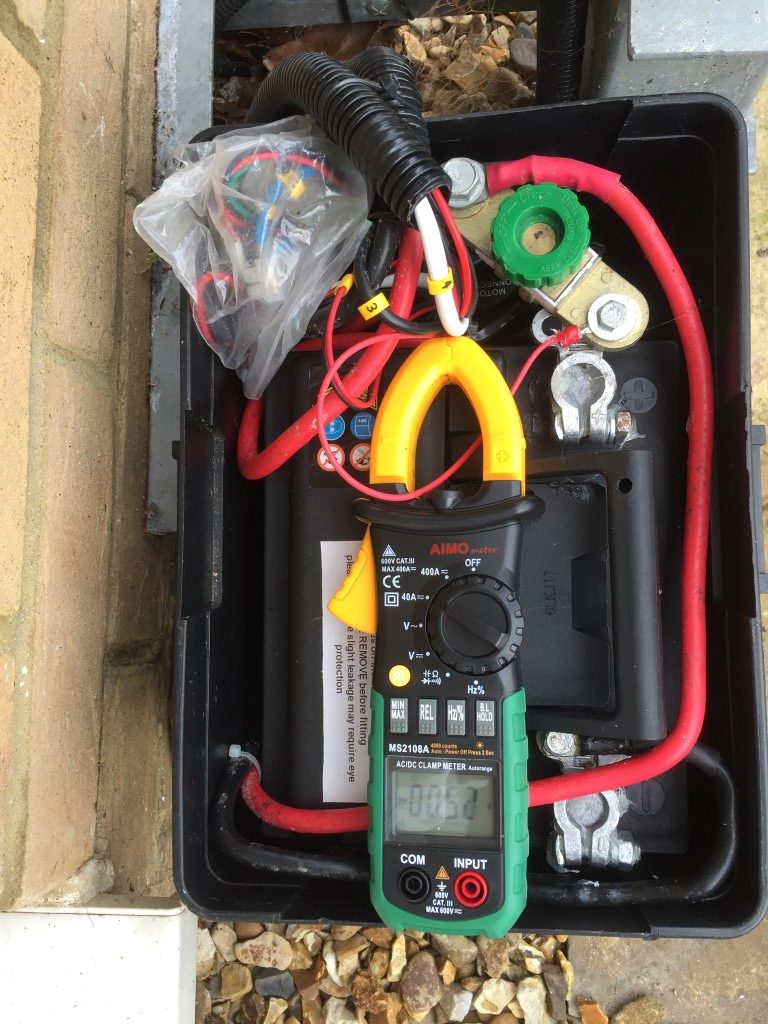
I have registered the CCTV and weather capture cameras with the Information Commissioners Office, therefore I have made a minor amendment to the Privacy Policy to reflect this.
The privacy policy can be viewed Here.

I have registered the CCTV and weather capture cameras with the Information Commissioners Office, therefore I have made a minor amendment to the Privacy Policy to reflect this.
The privacy policy can be viewed Here.
It has taken quite a while and a fair bit of work, but the ham radio mast automation project was finally commissioned and tested today.
The links to the previous parts are here –
The main bulk of the final part was the drawing out of cables from my 40mm duct and replacing the aluminium tube from the rotator with a slightly longer one, this will give me more room for antennas should they be needed at a later date.
So that I don’t have to run more antenna cables from the mast to the shack, I have fitted an Ameritron RCS-8V mast head 5 input antenna relay linked back to the shack by a multicore cable.
Mast winched down to allow the longer pole and relay unit to be fitted, while the mast was down, I added some more ‘P’ clips the tidy the convoluted tube.
The ‘kick’ in the tube allows the mast to sit in the top bracket recess without snagging any cables.
The cables from the mast were put inside an protective sleeving up to the point where they enter the duct, the cables from the mast are:
From the external control, a 12 core multicore cable is also drawn in the duct.
The 12 core is wired into the shack mast control unit, the unit is currently showing that the mast is in the raised position, a cable from this unit goes to the weather station Hobby Board relay interface.
The supply for the Hobby Board interface is derived from the 24v supply which is used for the mast sensors (within the interface is a voltage reduction circuit so it operates at 13v).
The Weather Display Hobby Board program has bee set to output a ‘mast lower’ signal if any of these conditions are met:
The lightning count was originally 8 strikes per minute and as the detector was picking up lightning approximately 30 miles away it triggered the mast to lower, which it did. As their is no distance calibration, I have increased the strikes per minute as I’m assuming the strike rate will increase as the storm gets closer.
If you have any questions or comments, please feel free to get in touch.
January 17 Update
Without my weather PC running Lightning Data could not be used, in Jan 17 I turned off the PC so now the weather related mast condition is from a standalone wind speed device.
Please see Part 5 HERE.
Third installment of the thrilling journey to install automation control to raise and lower my 12m radio mast, Part 2 is HERE.
As it was such a lovely few days weather I thought I’d spend some time working on mast automation, the proximity sensors (link to sensor blog) have been installed previously, so it was time to wire them up.
I bought some 10mm convoluted tube and ‘Tee’ fittings from Hilltop Products, 3/8″ P clips came courtesy of eBay, the existing mast control wiring arrangement was completely removed and replaced with new tube and clips, an 8 core cable (Alarm cable 7/0.2mm) was drawn in, each of the four mast sensors had a unique signal cable, the other four cores were doubled up for 24v power to the sensors.
The ‘Tee’ pieces were ideal to close on the Superseal connector rubber boots and gives a great finish.
I fitted an Emergency Stop button to the side of the mast and added a longer length of cable to the solar panel via a Superseal connector, existing control relays in the battery box were also removed and enclosure holes sealed.
It was at the point of cleaning up the battery box that I measured the current draw taken by the high current relay when energized, I had factored about 1A, however it turned out to be 2.5A, this meant that my controllers wiring loom switching wires were underrated.
I had neatly lace wired with waxed cord my loom, and it took me ages to undo that good work and replace the switching wires with 0.75mm2 singles, one this was done, it was out with the waxed cord for round two.
The reason so much effort was taken with cable identification and looming was that all the kit had to be striped from the wooden backboard in order for the board to fit back in the enclosure, once in, the kit gets remounted, it’s not a big space to work so I knew I had to make it robust against wires coming out.
Once installed and powered up, I tested the speed of operation of the emergency stop button, fortunately its as near as instant as I could perceive, so I pressed and released the mast raise switch, and stood back with my hand on the E-Stop in case it overshot the limits and the run timer was set too long, as it was it work perfectly, as did the lowering operation, the picture was taken after I pressed the Battery Charge override button, this disconnects the battery from the solar panel charger as the 4A charge is ON, battery voltage is displayed on the Mast Controller box and when this reaches 14.14v, the PLC will turn the charging relay off, reconnecting the battery to the solar charger once more.
Every four lifts of the mast or every Sunday at 01:00 whichever is sooner will cause the charging sequence to begin, in case the battery is unable to reach the set-point voltage, the PLC will disconnect the charger after 10 hours of use.
The white pipe at the bottom of the enclosure is for a single 12 core to the remote control unit in the shack, this is the next job to wire.
Power to the motor is from a 45Ah 360A battery, the original 063 type from Halfords was beginning to signs of aging, so I bought the one below from eBay for £24:50 in January 17:
The battery is maintained by a solar panel and after 4 lifts, a 4A charger kicks in, solar panel charging currrent is 502mA:
Current drawn by the motor raising the mast is a little over 23A, the duration is approximatly 47 seconds for the mast to reach full height.
The Load and time taken to lower the mast is a lot lower at 8.86A.
Please see Part 4 HERE.